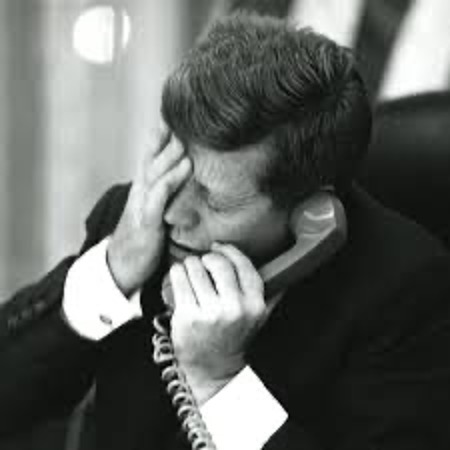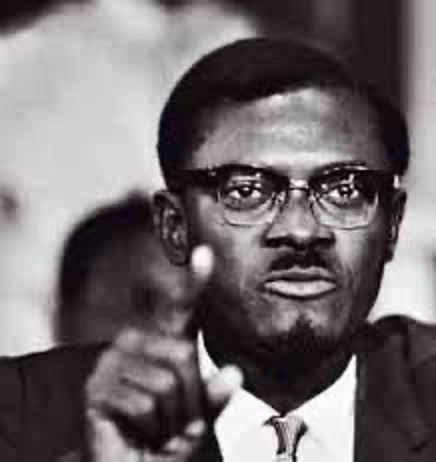In Memoriam: The Burial of Kennedy’s Foreign Policy
Back in 2013, I did a speech at the late Cyril Wecht’s conference in Pittsburgh. The title of that address was “Kennedy’s Foreign Policy: A Motive for Murder”. By that time, I had done a lot of research on the topic, going beyond what anyone had done previously, including Jim Douglass. During that appearance, I noted the following. Many books about the assassination, and also many Kennedy biographies, noted the following three events:
- Kennedy’s refusal to escalate the invasion at the Bay of Pigs
- His decision in Vietnam to send advisors and no combat troops
- JFK’s refusal to bomb the silos during the Missile Crisis
I added that although everyone describes these events, no one asks: Why did he decline those opportunities? It’s a significant question. Because we know that other presidents, before and after, would have done what he did not. For example, during the Bay of Pigs failure, Richard Nixon told JFK to declare a beachhead and send in the Marines. (Arthur Schlesinger, A Thousand Days, p. 288) Everyone knows what President Johnson did in Vietnam.
This question puzzled me for a long time. Then, one day in the little town of Julian, north of San Diego, I encountered the book JFK: Ordeal in Africa by Richard Mahoney. On the cover of that book is this picture:
I had never seen this photo of Kennedy before. So I bought the book and literally consumed it over three days. For me, it was a revelation. I am reminded of Samuel Coleridge’s famous quote about watching the great actor Edmund Kean: “To see him act, is like reading Shakespeare by flashes of lightning.”
The picture above was taken by White House photographer Jacques Lowe. Since Kennedy had been in office for less than a month, he was taking photos of Kennedy and his children for publicity purposes. While doing so, UN Ambassador Adlai Stevenson called the president to tell him that Patrice Lumumba of Congo was dead. Which was true. But Lumumba had been killed almost a month before this February 15th phone call took place.
There is another large difference illustrated by this picture. President Dwight Eisenhower had ordered CIA Director Allen Dulles to assassinate Lumumba. (Mahoney, p. 41) Which the Agency had tried to do in more than one way. For example, they had enlisted two killers, code-named QJ WIN and WI ROGUE, to go to the Congo and do the job. (ibid., pp. 52-53) After Kennedy was killed, President Johnson reversed his policy of support for a fledgling republic—which Lumumba wanted Congo to be—and united with the regressive forces to both wipe out the last of his followers, and back a dictatorship by Josef Mobutu. (Jonathan Kwitny, Endless Enemies, p. 84)
Upon reading Mahoney’s book, I began to get a creeping suspicion about the whole field of Kennedy studies, both the biographies and the assassination. I began to wonder if Kennedy’s true foreign policy had been hidden by academia and the MSM to a more assiduous degree than the true circumstances of his assassination. I ended up concluding that such was the case. The reason being that it provided the reason d’etre for his assassination.
In one way, Mahoney’s book—published in 1983-- was a perfect complement to John Newman’s volume JFK and Vietnam, published in 1992. In my experience, I had read Newman’s book before Mahoney’s. Unlike Newman’s book, JFK: Ordeal in Africa did not have the good fortune to be released in conjunction with Oliver Stone’s multi-Oscar-nominated film JFK. But the effect of both was similar. A mythology about Kennedy being a Cold Warrior had been dispelled. Kennedy was not going into Vietnam, not in 1961 or 1962. In fact, by 1963, it was clear that Kennedy was getting out of Vietnam, that is, withdrawing the advisors.
In Congo, Kennedy was trying to foster an independent, nationalistic movement emerging from the Third World and European colonialism. In that cause, he was going to back this man:
In fact, not knowing he was dead, Kennedy’s plan was to release Lumumba from house arrest. But just three days before Kennedy was inaugurated, Lumumba was killed before a firing squad by his dreaded enemies in the breakaway state of Katanga. As author John Morton Blum noted in his book Years of Discord, that timing was not a coincidence. There are strong indications that Lumumba’s enemies—the CIA, the Belgian colonizers, Moise Tshombe of Katanga—knew JFK would support Lumumba. And Kennedy spent a large part of the next three years doing all he could, including employing the UN, to stop Katanga from seceding from Congo. If Lumumba had lived, the history of Congo as a failed state would likely have been different.
One of the worst commentators in the MSM on both Vietnam and Congo was a darling of the MSM, the late David Halberstam. Halberstam worked for the New York Times, and under Kennedy, he was first stationed in Congo and then Vietnam. His reporting from both areas was remarkably superficial. He then wrote a book about Vietnam, The Best and the Brightest, which was worse than superficial; it was misleading. But it became a massive best-seller, so it was influential. It completely missed the importance of Defense Secretary Robert McNamara to Kennedy’s withdrawal plan in 1962-63. Halberstam then said that there was nothing really important happening with Vietnam in 1964. Actually, a sea change was occurring. Lyndon Johnson was reversing Kennedy’s withdrawal plan and planning on American direct intervention in Indochina. (Click here https://www.kennedysandking.com/content/halberstam-david-the-best-and-the-brightest-part-1)
In essence, what Halberstam’s The Best and the Brightest achieved was creating a cover for what both Johnson and Richard Nixon did later. Halberstam insinuated that there was a continuous line between all three men and that Vietnam was inevitable. This is simply bizarre. And it’s hard to comprehend that Halberstam did not realize how wrong he was about it. Because in the Gravel edition of the Pentagon Papers--which Halberstam said he read--there is a 40 page section labeled “Phased Withdrawal of US Forces: 1962-64”. In other words, Kennedy had begun a withdrawal program which was obstructed by LBJ.
As Oliver Stone pointed out in his 4 hour documentary, JFK: Destiny Betrayed, Johnson changed Kennedy’s foreign policy in many places. And Nixon followed in that path. In a 1963 conversation with a Portuguese diplomat, the former Vice-President said that independence was “not necessarily the best thing for Africa or the Africans.” (Mahoney, p. 238) This was contrary to President Kennedy’s concept, which was: “ Africa for the Africans...” (Philip Muehlenbeck, Betting on the Africans, p. 45)
But it was completely in keeping with a comment Nixon made during a 1960 NSC meeting under President Eisenhower. At that time, he said, “Some of the peoples of Africa have been out of the trees for only about fifty years.” (Ibid., p. 6). This was amply illustrated during a debate on a National Security Council study paper on Angola. Under the supervision of Henry Kissinger, the NSC developed a position called “the Tar Baby Option”:
It concluded that the “Whites are here to stay and the only way constructive change can come about is through them. There is no hope for the blacks to gain the political rights they seek through violence…" (Mahoney, p. 243)
This is one reason why Angola did not gain its independence until 1975, after Nixon’s resignation. Kennedy had advocated for Angola’s freedom from Portugal throughout his administration. He utilized a carrot and stick approach with Lisbon to gain Angolan independence. He used cuts in foreign grants and loans to Portugal and gave aid to rebel leader Holden Roberto’s Angolan nationalist group. (Muehlenbeck, p. 102)
Let us use one more example. After the Suez Crisis of 1956, Secretary of State John Foster Dulles decided to oppose Gamal Abdel Nasser’s unique advocacy of Arab nationalism. As president of Egypt, Nasser not only advocated for nationalism, but Pan-Arabism. Dulles responded to this with an NSC paper that stated, “The drive toward Arab Unity, particularly as led by Nasser, is strongly inimical to our interests.” (Muelhenbeck, p. 14) Another reason Dulles opposed Nasser was his alignment with the Non-Aligned Movement. This was a group of Third World countries that--after Dulles had overthrown governments in Iran and Guatemala--wanted to exist outside the Cold War.
That unabated Cold Warrior, Nixon, declared to the NSC that Nasser’s influence could supply inroads to communism throughout Africa. Sometimes, the Eisenhower administration could not decide if Nasser was pink or a fascist. Because Dulles commented that, “Although Nasser is not as dangerous as Hitler was, he relies on the same hero myth, and we must try to deflate that myth.” (ibid) So Dulles decided to use Saudi Arabia’s King Saud as a counterweight to Nasser. Eisenhower agreed: “If we could build Saud up as the individual to capture the imagination of the Arab world, Nasser would not last long.” (ibid)
This showed a lack of understanding of Nasser’s appeal in the Arab world--which was huge. Because Nasser was almost diametrically opposed to Saudi Arabia. He was a secularist. While Saudi Arabia practiced an extreme form of Islam. In 1956 and 1965, Nasser overwhelmingly won two elections to office. Saudi Arabia was a monarchy. Nasser advocated for a Pan-Arab union, one reason being that he thought the oil underground in the Middle East belonged to all the Arabs. To put it mildly, the Saudi monarchy did not agree.
But this is what made Nasser so wildly popular in the region. Some Arab historians place him as one of the three most influential leaders of the Arab world, along with Mohammed and Saladin. He offered the Middle East a choice between the Islamic fundamentalist past and abandoning it for a freer future. In fact, the shock troops for Saudi Arabia—the Muslim Brotherhood-- opposed Nasser vehemently. After they tried to kill him in 1954, he ended up going to war with them. (Click here https://www.youtube.com/watch?v=_ZIqdrFeFBk)
Unlike Foster Dulles and Eisenhower, Kennedy wanted to cooperate with Nasser. And unlike them, he also welcomed the Nonaligned Movement. He told National Security Advisor McGeorge Bundy to explore ways to improve relations with Nasser. Robert Komer of the NSC felt that:
…nationalism will remain the most dynamic force in the Arab world and Nasser will remain its foremost leader. His influence is likely to grow rather than decline. (Muelhenbeck, p. 125)
Kennedy thought that the Dulles Third World policy was counterproductive. In fact, as with Nasser, it had provided ways for the USSR to make inroads there. (Robert Rakove, Kennedy, Johnson and the Nonaligned World, p. 40) Kennedy thought he could compete with Moscow in the Third World, and do so successfully. This is why he supported the Non-Aligned Meeting in Belgrade in 1961. (ibid., p. 76) Kennedy’s policies enforced that new position in Congo, Angola, and his intervention in Indonesia, where he had the Dutch surrender West Irian to Achmed Sukarno. In late 1962, during the Cuban Missile Crisis, Kennedy extended arms and ammunition to India to halt a Chinese incursion on the border.
Kennedy’s new foreign policy, his break with Foster Dulles, perished with him in Dealey Plaza. Johnson had been personally friendly with Foster Dulles in the fifties. As Senate Majority Leader, he maintained a cooperative working relationship with the Secretary of State. In fact, when Dulles was in the hospital, about to pass on from cancer, Johnson sent him flowers. (Rakove, p. 55) Two powerful people cannot be that friendly unless they have some basic interest in common; and they did.
Unlike what President Johnson said, he did not continue with JFK’s policies abroad. He switched back to Foster Dulles just about everywhere on the map: Congo, the Middle East, Indochina, Indonesia, and the Dominican Republic. These policies had much more in common with Richard Nixon than they did with Kennedy. As Robert Rakove notes, in just one year, Johnson’s disruptions had caused US libraries in Cairo and Jakarta to go up in flames. (Rakove, p. xviii)
This path was continued by Nixon. In 1967, the year before he won the presidency, he made a speech at the Bohemian Grove. He recommended only giving aid to nations allied with America. Noting riots against America abroad, Nixon felt much of this was due to Kennedy’s tolerance of the non-aligned countries. Nixon instead held up the Shah of Iran as an example of his idea of a positive power in the Third World. And he particularly took umbrage with the fast decolonization of Africa. (Rakove, pp. 253-54)
If one looks closely, one can see a bridge from Johnson/Nixon to what will happen with the rise of the neocon movement under the tutelage of Dick Cheney and Donald Rumsfeld in 1975-76. That marked the undeclared end of hope for any revival of Kennedy’s ideas in foreign policy. When the neocons then took over under Ronald Reagan, that was the beginning of the neocon spread into the Democratic Party. Which resulted, for example, in Secretary of State Hillary Clinton’s toppling of Gaddafi in Libya and that country falling into failed state status. Also, her advocacy of an incursion into Syria. This neocon policy continued under President Biden and his endless aid to Ukraine, plus his celebration of the overthrow of Assad in Syria. Which has now led to the slaughter of the Alowites there. (Click here https://www.youtube.com/watch?v=p7WkRKkm8vE&t=28s)
Showing that there is little difference today between the two parties, President Trump met with the president of Syria, a former officer in Al Qaeda, Ahmad al-Sharaa. Trump then topped that with a White House meeting with the Crown Prince of Saudi Arabia, Mohammed bin Salman (MBS). The man whom Trump’s own intelligence agencies concluded had ordered the murder of Washington Post journalist Jamal Khashoggi. The likely reason is that the reporter was a critic of Saudi Arabia’s extreme religious rigidity, and particularly the policies of MBS. Khashoggi advocated for greater freedom of speech, women’s rights, and a more secular approach to religious freedom. For that, he was killed in the Saudi Arabian embassy in Istanbul, and his body was dismembered.
When asked about this, Trump replied, “Things happen.” (NY Times, 11/18/25, story by Shawn McCreesh) We have descended a long way from 1963.




